What do you think of when you hear the word ‘herbs’? Maybe you think of green, leafy plants that are used in salads and soups. Or maybe you think of dried herbs that are used in cooking.
Did you know that herbs were also mentioned in the Bible? Some of the herbs mentioned in the Bible have medicinal properties.
When most people think of the bible, they don’t usually think of herbs. But the Bible does mention a few different herbs by name.
Let’s take a look at some of these biblical herbs.
Herbs in the bible
Cumin:
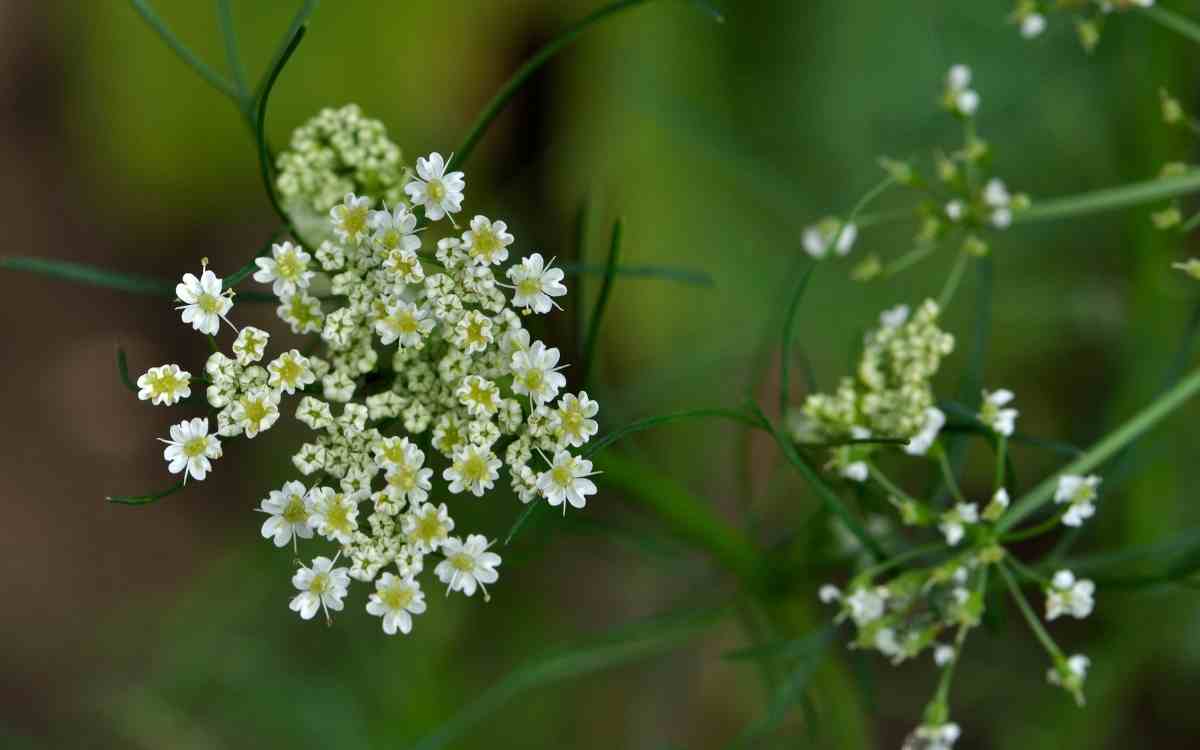
Cumin is a herb that is mentioned in the Bible several times. It was used as a spice and also had medicinal properties. Cumin was used to treat stomach problems, indigestion, and gas.
In Biblical times, this herb was found growing in many fields during this time. You can read the reference to cumin in Isaiah 28:25.
The cumin plant is a small, slender annual that grows to about two feet in height. It has long, thin leaves and small, white or red flowers. The cumin fruit is a dry seed that is used as a spice. Cumin has a strong, earthy flavor and is often used in Middle Eastern and Indian cuisine.
Cumin is a common ingredient in curry powder and is used to flavor many dishes, such as rice, stews, and soups. It can be used fresh, dried, or ground. Cumin is also used to make cumin tea, which is said to be helpful in treating colds and flu.
I love the flavor of cumin and use it often in my cooking. Try this recipe for a delicious and healthy way to enjoy cumin.
Cumin Roasted Chicken Recipe
Ingredients:
- 1 whole chicken, organic and free-range if possible
- 2 tablespoons cumin powder
- 1 tablespoon smoked paprika
- 1 teaspoon chili powder
- 1/2 teaspoon sea salt
- 1/4 teaspoon black pepper
- 2 tablespoons olive oil, divided
- 1 lime, juiced
Preparation:
1. Preheat the oven to 375 degrees Fahrenheit.
2. In a small bowl, combine cumin powder, smoked paprika, chili powder, salt, and pepper. Rub the spice mixture all over the chicken.
3. Heat 1 tablespoon olive oil in a large skillet over medium-high heat. Add the chicken and cook for about 3 minutes per side, until browned.
4. Transfer the chicken to a baking dish. Drizzle with the remaining olive oil and lime juice, then pour in the chicken broth.
5. Bake the chicken for 30-40 minutes, until cooked through. Enjoy!
Cumin has a strong, earthy flavor that goes well with chicken. This recipe is simple to make and can be enjoyed any night of the week. The leftovers are also great for lunch the next day. Give it a try and let me know what you think!
Turmeric:

Turmeric is another herb that is mentioned in the Bible. It was used as a spice and also had medicinal properties. In fact, King Solomon used this herb to describe his bride in Song of Solomon 4:13-14.
He said,
“Your branches are an orchard of pomegranates with the choicest of fruits, with henna and nard, 14 with nard and saffron, with calamus and cinnamon, with every kind of frankincense tree, with myrrh and aloes, with all the finest spices”
Turmeric was used to treat colds, flu, and digestive problems. Turmeric is a bright yellow spice that comes from the turmeric plant. The plant is native to India and Southeast Asia. The roots of the plant are dried and ground into a powder. Turmeric has a warm, earthy flavor and is often used in Indian cuisine.
Turmeric is a common ingredient in curry powder and is used to flavor many dishes, such as rice, stews, and soups. It can be used fresh, dried, or ground. Turmeric is also used to make turmeric tea, which is said to be helpful in treating colds and flu.
Anise:
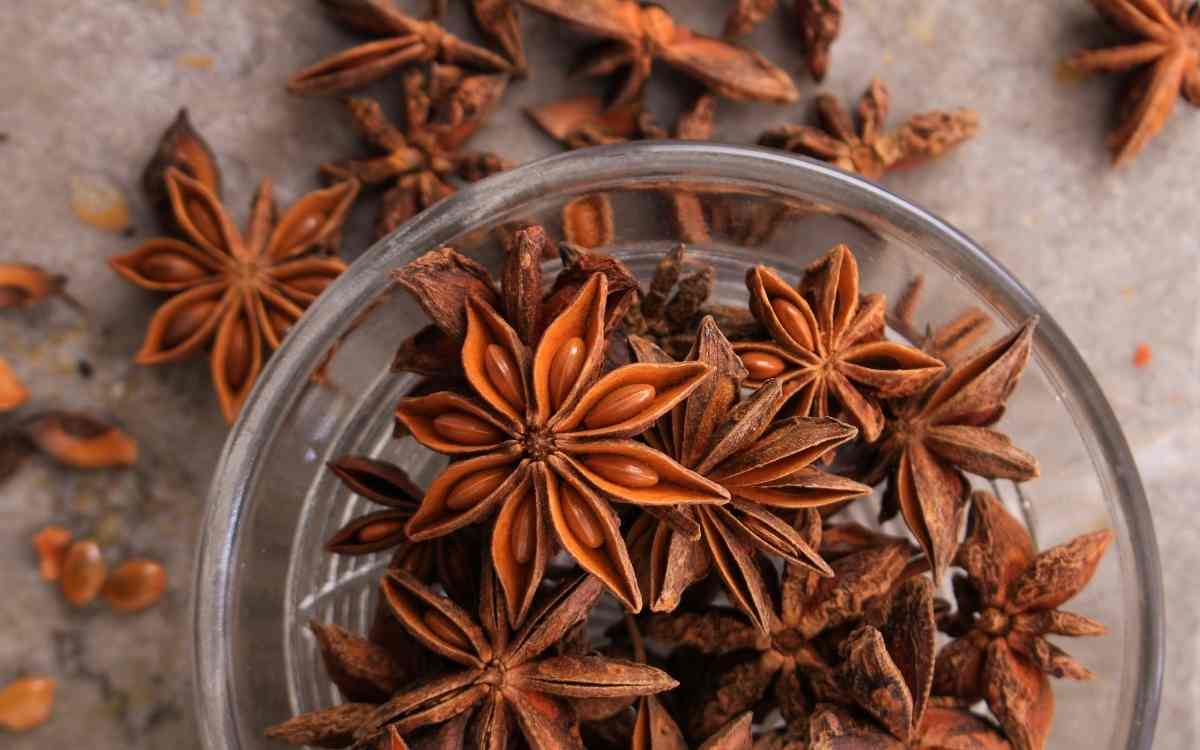
The anise plant is a small annual that grows to about two feet in height. It has long, thin leaves and small, white or red flowers. The anise fruit is a dry seed that is used as a spice. Anise has a sweet, licorice-like flavor and is often used in baking.
Anise is mentioned in the Bible in Matthew 23:23.
Jesus said,
“Woe to you, scribes and Pharisees, hypocrites! For you tithe mint and dill (Anise) and cumin and have neglected the weightier matters of the law: justice and mercy and faithfulness. These you ought to have done, without neglecting the others.”
Anise is a common ingredient in many Middle Eastern dishes, such as stews and soups. It can be used fresh, dried, or ground. Anise is also used to make anise tea, which is said to be helpful in treating colds and flu.
Cinnamon:

The cinnamon plant is a small tree that grows to about 20 feet in height. It has dark green, oval-shaped leaves, and small, white or red flowers. The cinnamon fruit is a dry seed that is used as a spice. Cinnamon has a sweet, warm flavor and is often used in baking.
Cinnamon is mentioned in the Bible in Exodus 30:23.
God said to Moses,
“Take the finest spices: of liquid myrrh five hundred shekels, and of sweet-smelling cinnamon half as much, that is, two hundred fifty shekels, and of aromatic cane two hundred fifty shekels”
Cinnamon is a popular spice that has been used for centuries. It is made from the bark of a tree and has a sweet, warm flavor. Cinnamon is used in baking and in many traditional dishes from around the world.
Cassia:

Cassia is a spice that is made from the bark of a tree. It is similar to cinnamon but has a stronger flavor. Cassia is often used in baking and in dishes from China and India.
Cassia is a spice that has been used for centuries. It is made from the bark of a tree and has a strong, sweet flavor. Cassia is used in baking and in many traditional dishes from around the world.
Cassia is mentioned in the Bible in Psalm 45:8. In this verse, the Psalmist compares the beauty of the bride to the spices cassia, myrrh, and aloes.
Cassia is a spice that can be used in sweet or savory dishes. It has a strong flavor, so it should be used sparingly. Cassia is available in most supermarkets.
Hyssop:

The hyssop plant is a small shrub that grows to about two feet in height. It has small, blue or purple flowers. The hyssop herb is used as a seasoning. Hyssop has a minty flavor and is often used in baking.
Hyssop is mentioned in the Bible in Psalm 51:7.
David said,
“Purge me with hyssop, and I shall be clean; wash me, and I shall be whiter than snow.”
Hyssop is a common ingredient in many Middle Eastern dishes, such as stews and soups. It can be used fresh, dried, or ground. Hyssop is also used to make tea.
Hyssop can be found in the wild, but it is also grown commercially. The plant is easy to grow and does not require much care. It can be propagated by seed, cuttings, or division.
Hyssop is a perennial herb that belongs to the mint family. The plant is native to the Mediterranean region. It is also found in Europe, Asia, and Africa.
The name “hyssop” comes from the Greek word “hussopos”, which means “holy herb”. The plant has been used for centuries for its medicinal properties.
Hyssop is a stimulant and can be used to treat indigestion. It is also an expectorant and can be used to treat coughs and colds. The herb has antiseptic properties and can be used to treat wounds.
Hyssop oil is extracted from the leaves and flowers of the plant. The oil has a fresh, minty aroma. It is used in aromatherapy and as a flavoring agent.
Hyssop oil is said to be helpful in treating respiratory disorders such as asthma and bronchitis. It is also said to be effective in treating colds, flu, and headaches. The oil can also be applied topically to treat skin conditions such as eczema and psoriasis.
Milk Thistle:
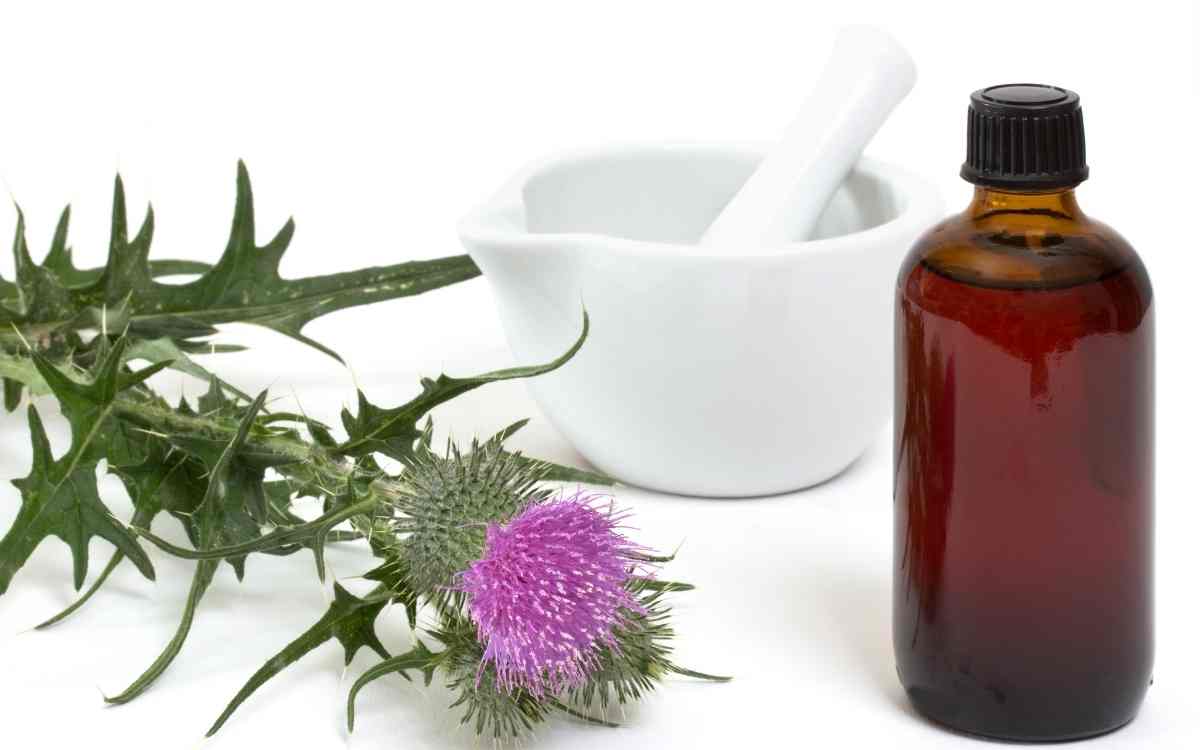
Milk thistle is a tall, leafy plant that grows to about four feet in height. It has purple or white flowers. The milk thistle herb is used as a seasoning. Milk thistle has a slightly bitter flavor and is often used in baking.
The milk thistle plant is native to Europe and Asia. It has been introduced to North America and Australia.
The name “milk thistle” comes from the white veins that run through the leaves of the plant. The herb has been used for centuries for its medicinal properties.
Milk thistle is a liver tonic and can be used to treat hepatitis and cirrhosis. It is also said to be effective in treating gallbladder disorders. The herb can also be applied topically to treat skin conditions such as psoriasis.
Milk thistle is available in capsules, tablets, and tinctures. It can also be found in some health food stores.
This herb in the bible is mentioned in Genesis 3:18.
“Thorns also and thistles shall it bring forth to thee, and thou shalt eat the herb of the field..”
Some people claim that the first use of milk thistle was in ancient Greece. The Greek physician Dioscorides used the herb to treat liver and spleen disorders. Milk thistle was also used by the Romans for its medicinal properties.
In the Middle Ages, milk thistle was used to treat jaundice and malaria. The herb was also used for its supposed ability to increase breast milk production.
Milk thistle was brought to the Americas by European settlers. The herb was used to treat liver and kidney disorders. Milk thistle is still used today for its medicinal properties.
Flax:
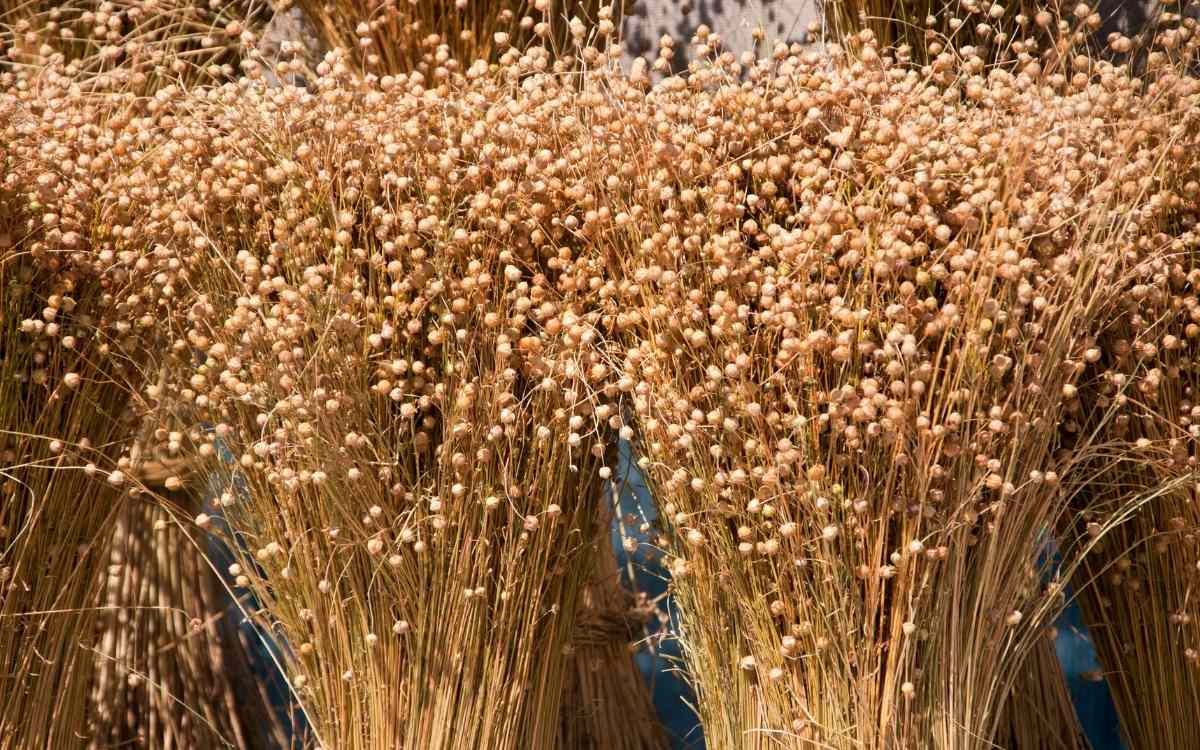
Flax is a tall, thin plant that grows to about four feet in height. It has small, blue flowers.
Flax plants were originally cultivated in Mesopotamia, Assyria, and Egypt for over 5,000 years. The plant was also cultivated in China and India.
The name “flax” comes from the Latin word “linum”, which means “linen”. The plant was used to make linen cloth.
Flax is a source of fiber and oil. The plant is used to make paper, cloth, and rope. The oil is used in paints, varnishes, and soaps.
Flax is grown in cool climates. The plant prefers moist soils and full sun. It is harvested in the summer.
Flaxseed oil is a source of essential fatty acids such as omega-3. These fatty acids are important for maintaining heart health and preventing chronic diseases such as cancer and arthritis.
Flaxseed oil is also a good source of fiber. It can be used to improve digestive health and regulate bowel movements. Additionally, flaxseed oil can help to lower cholesterol levels and blood pressure.
It is it’s mentioned so many times in Bible. You can find it in Exodus 9:31, Joshua 2:6, Judges 15:14, Proverbs 31:13, and Isaiah 19:9.
Flaxseed oil is a natural product that has a number of health benefits. It is high in omega-3 fatty acids, which are important for maintaining heart health and preventing chronic diseases such as cancer and arthritis.
Additionally, flaxseed oil is a good source of fiber and can be used to improve digestive health and regulate bowel movements.
Bitter Herbs:
Bitter herbs are plants that have a bitter taste. The bitterness is due to the presence of alkaloids in the plants. Alkaloids are natural chemicals that have a variety of effects on the human body.
Some bitter herbs are used as seasonings, while others are used for their medicinal properties. Bitter herbs can be found in many different cuisines, including Italian, Indian, and Chinese.
Bitter herbs are often used to stimulate the appetite. They can also be used to aid digestion and relieve stomach upset. Additionally, bitter herbs may help to lower blood sugar levels.
The reference for this herb in the Bible can be found in Exodus 12:8,
“And they shall eat the flesh in that night, roast with fire, and unleavened bread; and with bitter herbs, they shall eat it.”
Bitter herbs are used in many cuisines to add flavor to food. They can also be used for their medicinal properties. Bitter herbs may help to stimulate the appetite, aid digestion, and lower blood sugar levels.
Mint:
Mint is a perennial plant that grows to about three feet in height. It has dark green leaves and purple flowers.
Mint is native to Europe, Asia, and Africa. The plant was introduced to the Americas by European settlers.
Mint is used for its flavor and aroma. The leaves are used to flavor food and drink. Mint is also used to make essential oils and cosmetics.
Mint grows in moist, shady areas. It is harvested in the summer.
Mint has a number of health benefits. The plant is a good source of antioxidants and can help to protect against chronic diseases such as cancer and heart disease. Additionally, mint may help to improve digestion and relieve nausea.
Mint is mentioned several times in the Bible, including in Matthew 23:23 and Luke 11:42.
Mint is also used to make essential oils and cosmetics. Mint has a number of health benefits, including being a good source of antioxidants, helping to improve digestion, and relieving nausea.
Wisdom supplement
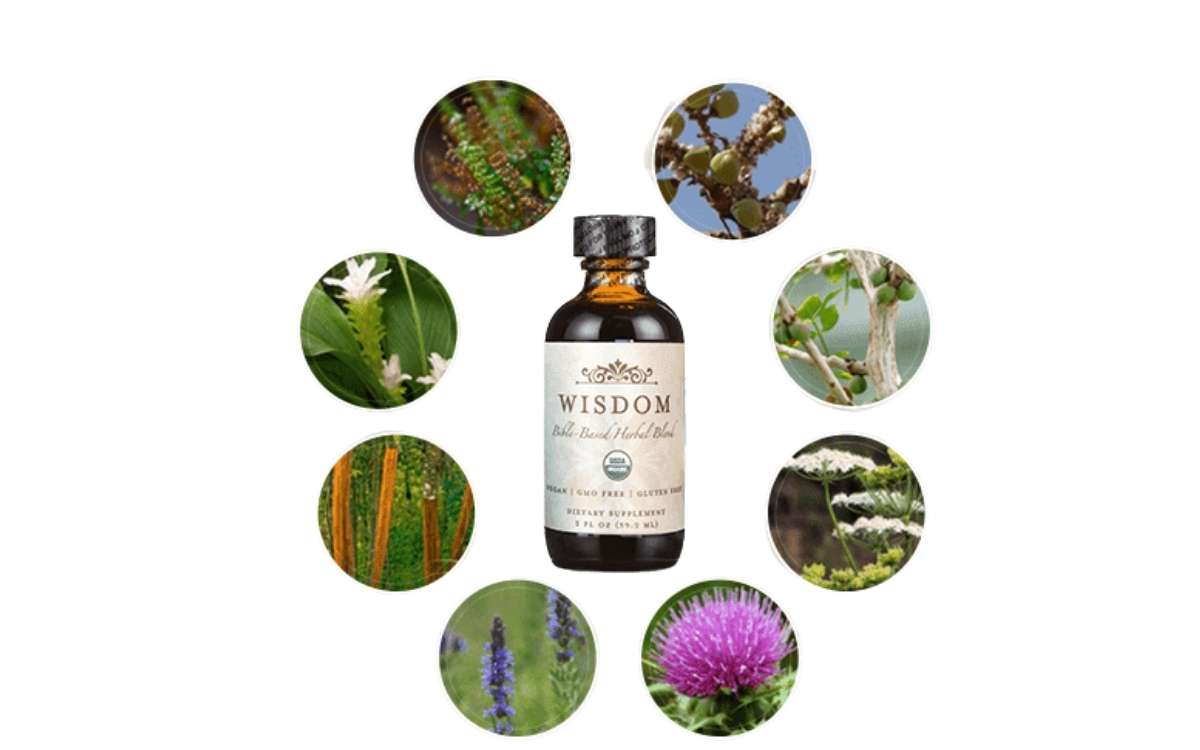
Wisdom supplement is the world’s first all-natural Bible Based herbal supplement. It contains the above eight biblical herbs. It is claimed to be the world’s first Christian daily supplement designed to transform energy levels and revitalizes your health.
The eight biblical herbs are-
- Turmeric
- Anise
- Cinnamon
- Hyssop
- Frankincense
- Myrrh
- Tulsi – Holy Basil
- Milk Thistle
All these eight Herbs in the bible are blended into one supplement.
How to use Wisdom supplement?
There are three effective ways to use wisdom-
1: Just 1-2 Droppers Per Day: Place two tiny droppers on your tongue at any time of the day.
2: Add To Your Salads, Smoothies, or Teas For Extra Flavor: It’s not only great in smoothies, salads, teas, lemonades, or even your morning coffee; wisdom is delicious and may be used to flavor meals and beverages.
3: Apply To Your Skin Before Bed: Apply Wisdom to your skin before going to bed and allow it to tighten, revitalize, and hydrate your complexion while you sleep.
Visit Wisdom Supplement Official Website
Conclusion:
Herbs play an important role in the Bible, both as a source of physical and spiritual nourishment.
They are mentioned often in connection with healing, both physical and emotional. Herbs also have a long history of use in religious ceremonies and rituals.
Today, Christians can continue to benefit from the health-giving properties of herbs by using them in their own homes and gardens.
| You May Also Like |







